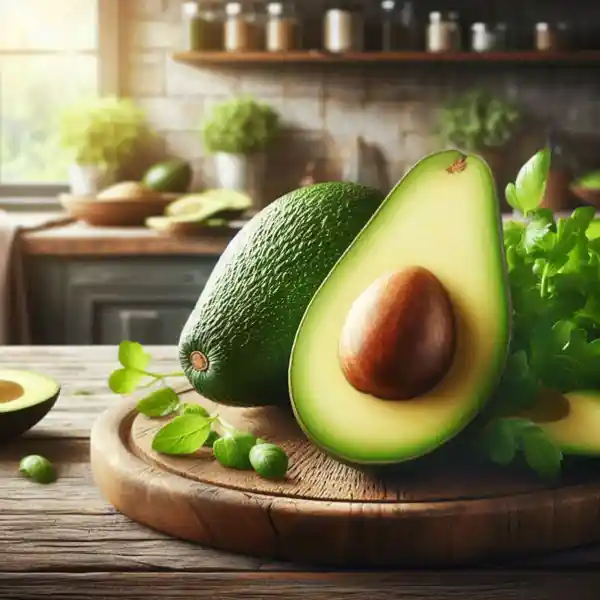The Avocado: A Wonder of Nature
History, Benefits, and Cultivation of the Green Gold
Introduction
The avocado, often referred to as “green gold,” is a fruit that has been cherished in Central and South America for thousands of years. Its popularity has increased worldwide in recent decades, and it is now indispensable in many kitchens. But what makes the avocado so special? In this essay, we will take a closer look at its history, health benefits, and cultivation methods.

History of the Avocado
The avocado has a long and fascinating history. Archaeological findings show that avocados were used in Mexico about 10,000 years ago. The Aztecs and Maya valued them not only for their taste but also for their nutritious properties. They called the avocado “ahuacatl,” which means “testicle,” probably due to the shape of the fruit.
In the 16th century, Spanish conquerors brought the avocado to Europe, where it was initially considered an exotic rarity. It wasn’t until the 19th century that commercial cultivation of the avocado began in California, and from there, the fruit spread to other parts of the world.
The Spread of the Avocado
Today, avocados are grown worldwide in tropical and subtropical regions. The main producing countries are Mexico, the Dominican Republic, Peru, Indonesia, and Colombia. Cultivation has also increased in Israel, Spain, and South Africa. However, California remains a significant producer, especially for the USA.
Health Benefits of the Avocado
The avocado is considered one of the most nutrient-rich fruits in the world. It is rich in vitamins, minerals, and healthy fats. Here are some of the most important health benefits in detail:
Rich in Healthy Fats
The avocado is particularly known for its high content of monounsaturated fatty acids, especially oleic acid. These fats are good for the heart as they help lower cholesterol levels and reduce inflammation in the body.
Full of Vitamins and Minerals
Avocados are an excellent source of many important nutrients, including vitamin K, vitamin E, vitamin C, vitamin B6, and folic acid. They also contain potassium, which helps regulate blood pressure and supports muscle and nerve function.
Fiber for Digestion
An avocado contains about 7 grams of fiber, which is about 27% of the recommended daily intake. Fiber is important for healthy digestion and can help reduce the risk of colon cancer.
Antioxidants and Protection Against Free Radicals
Avocados are rich in antioxidants such as lutein and zeaxanthin, which are particularly important for eye health. These antioxidants protect the eyes from harmful UV rays and can reduce the risk of age-related macular degeneration and cataracts.
Cultivation of Avocados
The cultivation of avocados requires specific climatic conditions. The trees thrive best in tropical and subtropical regions where temperatures range between 16 and 30 degrees Celsius. They need well-drained soils and adequate water supply, as they are sensitive to drought.
The Different Varieties
There are several varieties of avocados, with the most well-known and commonly consumed variety being the Hass avocado. This variety has a dark green, almost black skin and creamy, buttery flesh. Other popular varieties include Fuerte, Bacon, and Pinkerton.
Sustainability and Environmental Aspects
The increasing global consumption of avocados has also brought ecological challenges. Cultivation requires large amounts of water and can lead to deforestation, especially in regions like Mexico. It is important to promote sustainable cultivation methods to minimize environmental impact.
The Culinary Versatility of the Avocado
Avocados are incredibly versatile and can be used in a variety of dishes. They are known as the main ingredient in guacamole, a traditional Mexican dip often served with tortilla chips. However, the uses of the avocado go far beyond that.
Salads and Sandwiches
Sliced or diced avocados are a great addition to salads and sandwiches. They add a creamy texture and a mild, buttery flavor to any dish.
Smoothies and Desserts
Avocados can also be used in smoothies and desserts. Their creamy consistency is ideal for blending with fruits, yogurt, and other ingredients to create a nutrient-rich smoothie. They can also be used as a healthier alternative to butter or cream in baking recipes.
Savory Dishes
Avocados go well with savory dishes like eggs, toasts, and even soups. A well-known breakfast dish is avocado toast, where ripe avocado is mashed on toasted bread and seasoned with salt, pepper, and lemon juice.
Conclusion
The avocado is more than just a trendy fruit; it is a wonder of nature. Its rich history, impressive health benefits, and culinary versatility make it a valuable addition to any kitchen. While the cultivation of avocados presents ecological challenges, sustainable practices can help ensure that we can enjoy this remarkable fruit for a long time. Whether in salads, smoothies, or simply on its own – the avocado has earned its place as a popular superfood.